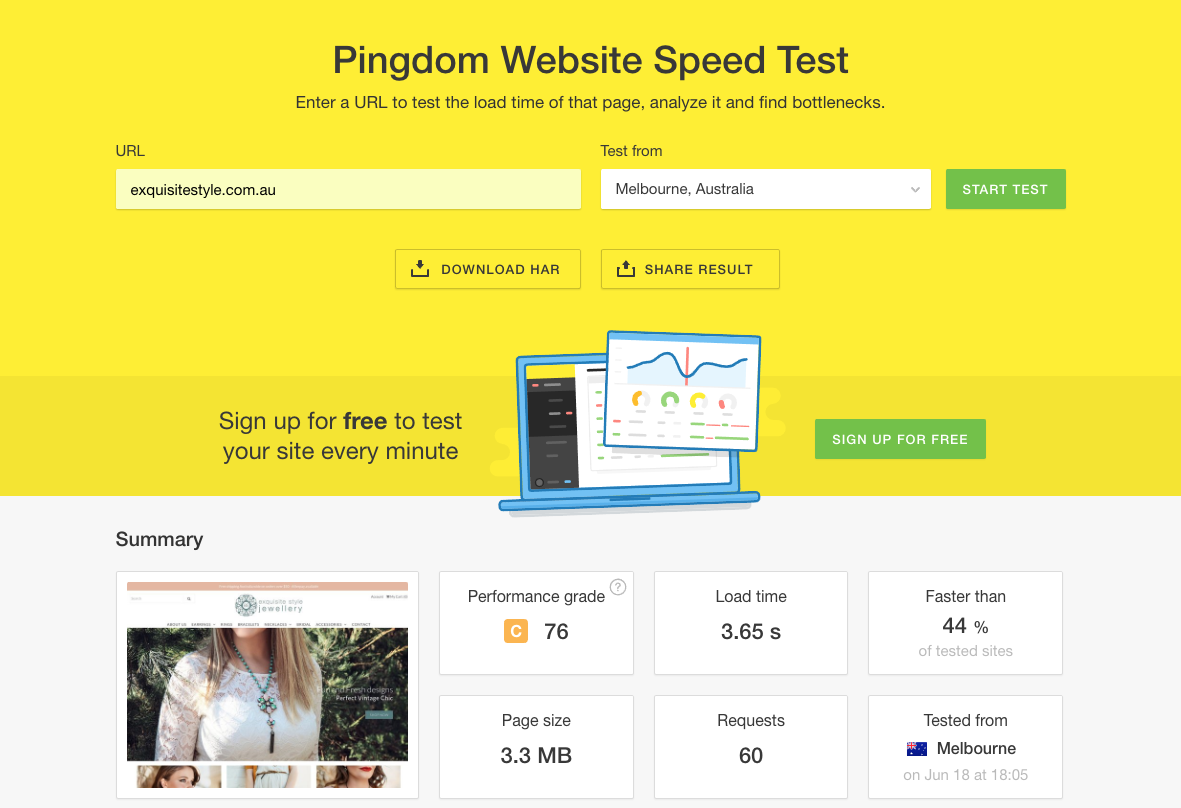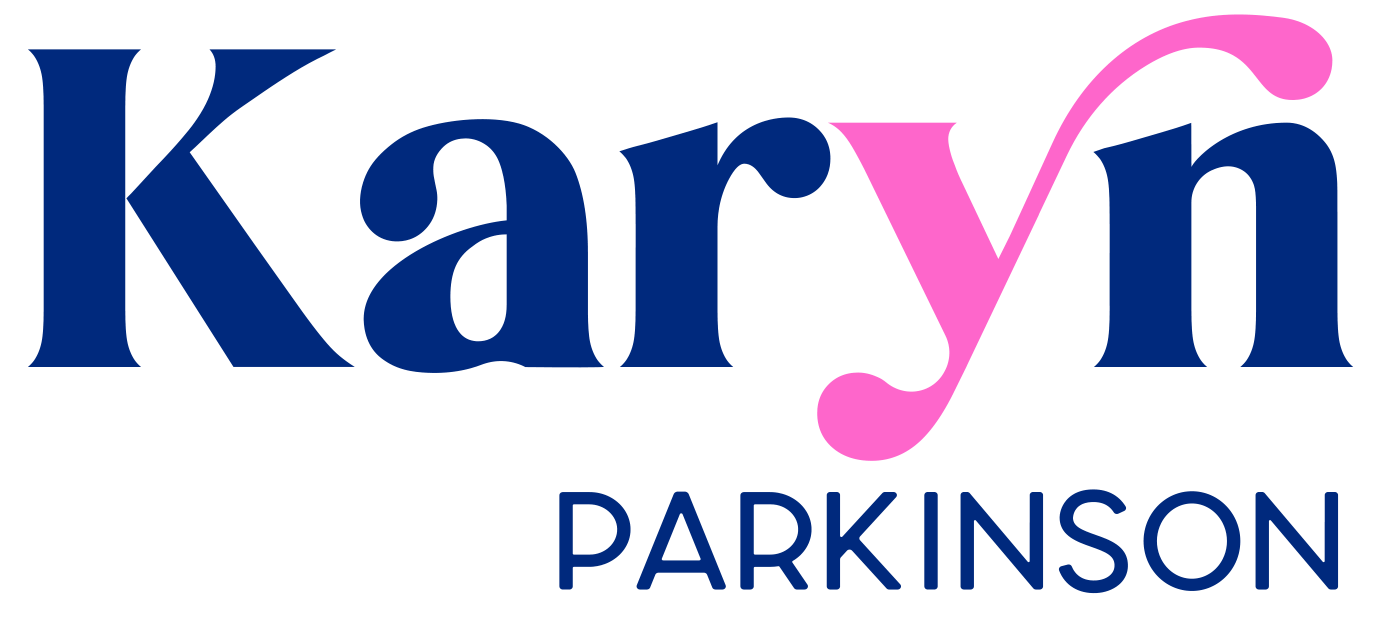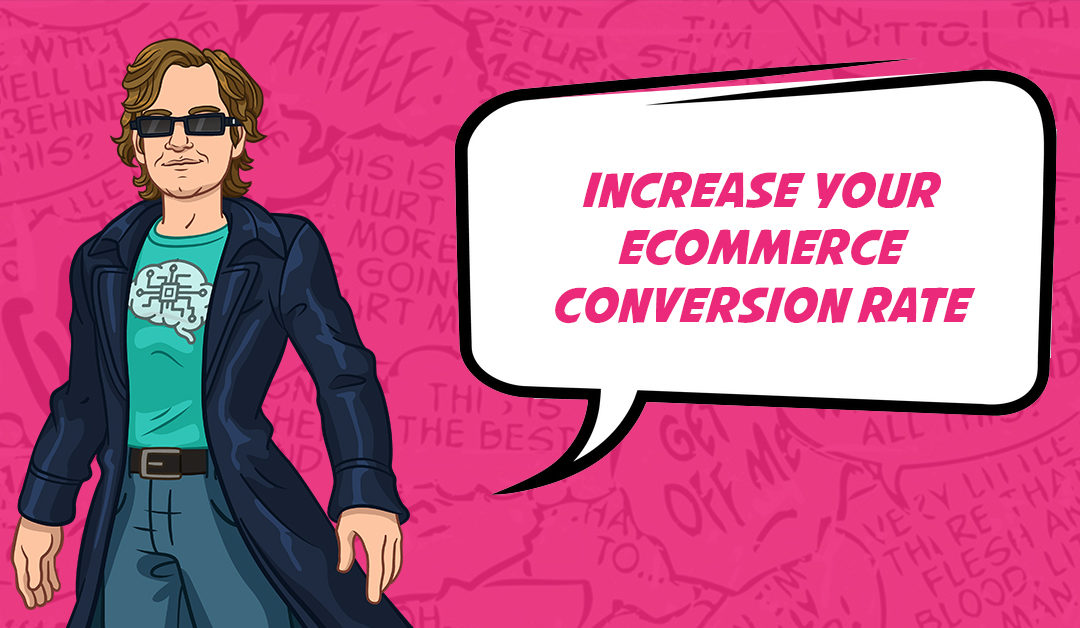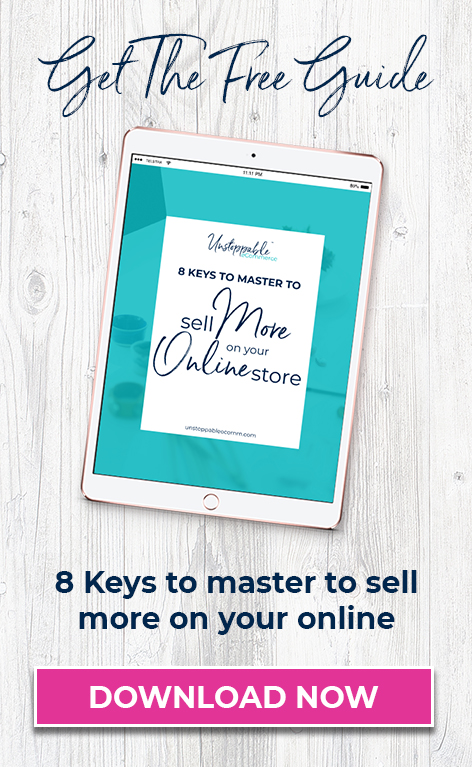Facebook ads are amazing for sending quality traffic to an eCommerce website, but what if you have lots of traffic but no one is checking out? There’s nothing more frustrating than looking at your stats seeing all the traffic and thinking WHY AREN’T YOU BUYING ANYTHING!!
Selling goods online seems easy, there’s no rent, no opening hours, and no limit to how many people can browse your goods at once and more and more businesses are taking their products online.
But ultimately selling online is harder than in a brick an mortar store because there’s no friendly welcome, no way to touch and feel the goods, no way to try things on or test them, no shop assistant to build instant rapport with.
There are 10 key elements you need to have in place on your eCommerce store to overcome these barriers and create a positive shopping experience online.
1. Use Responsive Design
There is nothing more frustrating than visiting a website on my mobile and having to zoom in and squint and battle the site to find the menu!
These days eCommerce sites get the majority of website traffic from mobile devices, however, people still design for Desktop first.
So get out your mobile phone, if you’re not already on it, and check what your site looks like on mobile, browse your products, add to cart and even make a purchase – is it a nice experience? If not you need to make some changes.
A truly responsive website will adapt to each screen size to create a seamless experience on any device.
2. Showcase Shipping & Returns
When you’re shopping online there are a few things you want to know, how much will it cost you including shipping costs and what do you do if it’s not quite right?
Shipping costs are a big part of selling online. You have a few options when it comes to charging shipping – charge by order based on weight, location etc, charge a flat rate shipping cost or provide free shipping.
Shipping costs are one of the biggest things that stop people from purchasing online, most would rather buy something for $40 with free shipping than for $35 with a $5 shipping fee!
With this in mind you can choose to increase your costs to cover shipping fees if you’re an online only store or you can wear the cost of shipping as an expense of selling online. If you’re going to do the latter I suggest offering free shipping over a certain order amount.
This encourages people to spend more to get the free shipping and it also gives you a little extra fat in the order to cover the cost of the shipping. I recommend making the free shipping limit the cost of an average 2 item purchase. Consider using an up to update people on how much they need to spend until they qualify for free shipping.
If you are going to charge under a certain amount a flat rate fee is much easier as a consumer so if you can go with this option, you may lose on some orders and win on others.
Most importantly make the shipping cost obvious on every page. Consider a header banner showcasing your shipping cost and promoting any free shipping offers.
Another thing people want to know is what to do if the product is not right, so instead of making your returns policy hidden at the bottom somewhere use it as a selling point and showcase your returns policy on each product page. This adds a lot of integrity to your site and gives people confidence to buy knowing their not stuck with something if it’s not right.
3. Create Social Proof
When there’s lots of people in a store browsing you instantly get the feeling that the store is popular and it makes you feel comfortable about buying there. It’s like when you’re at a market and there’s lots of people at a particular stall, you instantly want to know what they’re selling!
When you’re browsing online you can’t see the other people sitting on their phones browsing the same store, you don’t know if anyone has bought from the store before, if they did, did they receive their item? There’s an element of risk with online shopping and it’s your job to make people feel comfortable ordering from your store, you need to put their mind at ease with social proof.
There are a few ways to add this social proof:
- Install a review app and encourage customers to review your products once they have received them
- Share your Instagram feed on your site with photos of customers using your products
- Install a Recent Sales Notification app which shows when someone else is viewing a product or has just made a purchase. Try Sales Pop for Shopify or Proven for WordPress.
- Link to your social media profiles
- Use testimonials – video testimonials work best!
4. Kill The Pop Ups
The debate over to pop up, or not to pop up, is usually decided with the store in mind. Pro pop up argue that they receive so many emails from it so they keep it. I wonder though, do they measure how many people they loose who are just dam annoyed when they find this nice website, go to browse and then BOOM are interrupted by a pop up wanting their email. It’s like asking someone on a date before you’ve even said hello.
If you can’t tell I’m anti pop up, but I’m not the only one, Google now penalises websites which use automatic popups by lowering their organic ranking. So if you love that free Google traffic, it’s time to loose the pop up once and for all.
5. Embrace The Need For Speed
No one likes waiting – waiting at traffic lights, waiting in line or waiting for a website to load. Ideally your website should load in under 3 seconds. If you’re not sure how long your site takes give it a test at https://tools.pingdom.com/.
This handy, free tool will tell you how long your site takes to load from different countries, as well as suggestions to improve your website’s load time. If you have a web developer get them to work their way through the list to make your site as quick as possible. If you have lots of large images on your website you may need to compress them to reduce the page size.

6. Make Purchasing Easy
When you have an online store you want your users to make a purchase, so make it nice and easy for them. Start with a bright colour “Add to Cart” button that stands out from everything else. As this is your main call-to-action it should be a different colour to all the other links and buttons on your site.
Then once they have added to cart make it a nice streamline process from cart to checkout:
- Once they add to cart either take them directly to the cart or clearly display the cart on screen in a sidebar or pop up (yes these pop ups are OK!)
- Ensure if they continue shopping they can easily access their cart at any time, from any page
- Make it easy to add or remove items from their cart
- Make items clear in the cart including sizing and quantity
- Allow them to proceed to payment without jumping through hoops
- Allow them to check out as a guest
- Consider integrating your shopping cart with Facebook Messenger so you can message them order updates
- Ensure you have a secure checkout using Https://
7. Use Great Product Images
When someone is shopping on your online store they are relying on your images to showcase the product. This should be one of your biggest focuses when building your online store. The perception is crappy photos = crappy product, quality photos = quality product.
Here are some things to consider:
- Invest in good quality photos, either use a photographer or invest in a good set up if you will be taking your own photos regularly
- If you are taking your own photos invest in training
- Feature both lifestyle photos and product photos
- Use multiple photos of each product at different angles
- Consider using product videos, especially for clothing
- Allow people to zoom in on photos
- Add personality to your images
8. Value Your Product Descriptions
Your product descriptions are so important, yet sometimes given how time consuming it can be to write product descriptions for all your products they tend to start off great then end up short and sharp.
When writing your product descriptions imagine the person has found your product the first time, the photos along with the description are going to tell them whether they want it or not.
Be sure to:
- Write with your target market in mind
- Describe the benefits of purchasing the product
- Use emotion, how will the product make them feel
- Include the product specifications, including material, size etc
- Re-iterate things like Australian Made, Free Shipping etc
- Brake up long descriptions with headings and dot points
- Use an easy to read font size
- Suggest other products that go together
- Use a consistent voice across your website, don’t be afraid to include personality!
9. Make Things Easy To Find
When you’re shopping in a department store there is usually a clear map showing which floor everything is on and you can walk straight in, find the right level and make your way there. When browsing your website it should be just as easy.
- Make menu items easy to find and read
- Break things up into categories such as Mens, Womens, Kids, Babies
- Avoid menu overwhelm – you don’t have to include everything in the top level menu
- Use filters such as price, colour, size and category to make it easy for people to find what they are looking for
- Show related products – this can also increase order value
- Use menu breadcrumbs so people know where they are and how they got there
10. Re-target Using Facebook Ads
Just because someone abandons their cart doesn’t mean they didn’t want to buy your product. On average 68% of eCommerce carts are abandoned. Sometimes people get busy, need time to think about their purchase, or wait for pay day.
Quite often though during the time they added to cart and when they have the time – or the money that have forgotten about you.
This is where re-targeting comes in. Using Facebook’s dynamic product ads you can show them reminder ads showcasing the exact products they had in their cart. This drastically decreases cart abandonment rates.
Unlike email marketing Facebook ads don’t require the user to provide their email or have an account for you to be able to target them. This one thing alone could drastically increase your website conversion rate.
Don’t be afraid to use this in conjunction with a cart abandonment email, email and Facebook marketing work great together!
So there you have it, 10 elements you need to tick off in order to have optimal conversion rates on your eCommerce website. Industry average for an eCommerce website is an overall conversion rate of 2-3%. Take a look at your average conversion rate for the last 12 months and make a goal for the next 3 months. Implement some changes based on the above and then check your conversion rate again in 3 months time and see how you’re doing. Go get ’em!




I love all the this advice! It’s great to have it consolidated in one place.
Thanks Dana, and thank you so much for the spelling corrections too! All fixed!